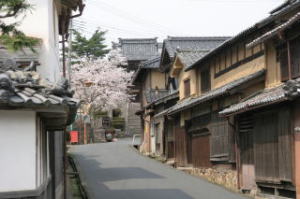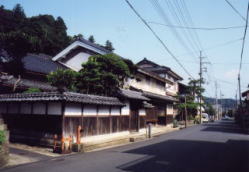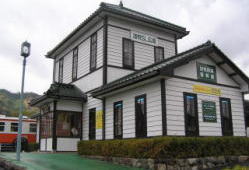TOP > Welcome to Rekishikaido > Yosano
Thema area Yosano
 The northern part of Kyoto Prefecture is nestled amongst mountains of the likes of the Oheyama Peaks. Fertile plains fill the Noda River basin that extends all the way to the Aso Sea where the views of scenic landscapes and Amanohashidate are breathtaking.
The northern part of Kyoto Prefecture is nestled amongst mountains of the likes of the Oheyama Peaks. Fertile plains fill the Noda River basin that extends all the way to the Aso Sea where the views of scenic landscapes and Amanohashidate are breathtaking.
The area is enveloped in seasonal beauty with tender greens in spring, herbs and sunflowers in summer and golden ears of rice and autumnal tints in the fall, and flowing rivers and wondrous seascapes throughout the year.
Long ago, Kaya prospered as a gateway for culture from mainland Asia. Even before that, it was home to early settlements in Japan’s long history, which can be enjoyed from a historic park built around the Ebisuyama and Sakuyama Tumuli. A stroll down the Chirimen-kaido Byway in the old quarter of the town introduces the visitor to the local weaving trade via the sound of working looms.
Point
Chirimen-kaido Byway:The name Chirimen comes from the crepe, said chirimen in Japanese, that has been, amongst other products and wares, transported along this road between Tango and the Nishijin area of Kyoto since the Edo Period. It was and still is a busy thoroughfare with crepe merchants, crepe factories, banks, post offices, inns, breweries, hospitals, train stations and town halls along the way.

|
Former Bito Family Home
This crepe merchant's home was built in 1865. It was opened to the general public in October 2004 after a full year of restoration and preservation work.
From the Edo Period to the Meiji Period, the Bito family operated a crepe yarn business. The 11th generation Shozo Bito worked as the Kaya Station Master and served as the Mayor of Kaya in the early Showa Era. The furnishings in the second floor western-style parlor that was added in 1928 were specially ordered by Shozo. The drawings for the structure and furniture have been preserved and detail the building process.
How to get there: Approx. 10 min by taxi from Nodagawa Station of the Kitakinki Tango Railway
Open: 9:00am - 5:00pm (Doors closed at 4:30pm)
Closed: Mondays (Tuesday if Monday is a holiday), December 29 - January 3
Admission fee: 200yen
Yosano Tumulus Park
There are over 600 burial mounds in Kaya. Of them, the Ebisuyama Tumulus stands out for its enormous size, being one of the three largest on the Sea of Japan. It is a keyhole shaped mound of 145 m in length, built in the later part of the early tumulus period. It and the Sakuyama Tumulus have been restored and a park built around them. The Haniwa Museum adjacent to the mounds puts on display a variety of clay figurines that were unearthed from the tombs, and shows a video on how the tombs were built.
How to get there: Approx. 10 min by taxi from Nodagawa Station of the Kitakinki Tango Railway
Open: 9:00am - 5:00pm
Admission fee: 300yen (Haniwa Museum)

|
Kaya SL Square
The SL Square was built on the site of the mining station of the old Kaya Railway that used to carry Tango crepe and nickel ore. The restored wooden station house preserves the original look and inside displays signal lamps, signal repeaters and other artifacts from the day. Across from the station house, steam locomotives are on display.
How to get there: Approx. 15 min by taxi from Nodagawa Station of the Kitakinki Tango Railway
Open: 10:00am - 6:00pm
Admission fee: 300yen
Closed: Open all year-round










